.
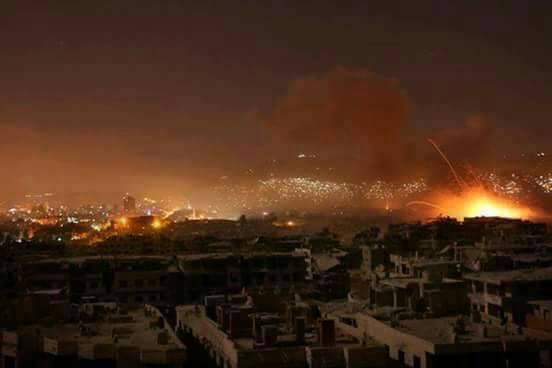
#Al-Ghouta: image via Dr. Zaineddin @DrZaineddin, 18 February 2018
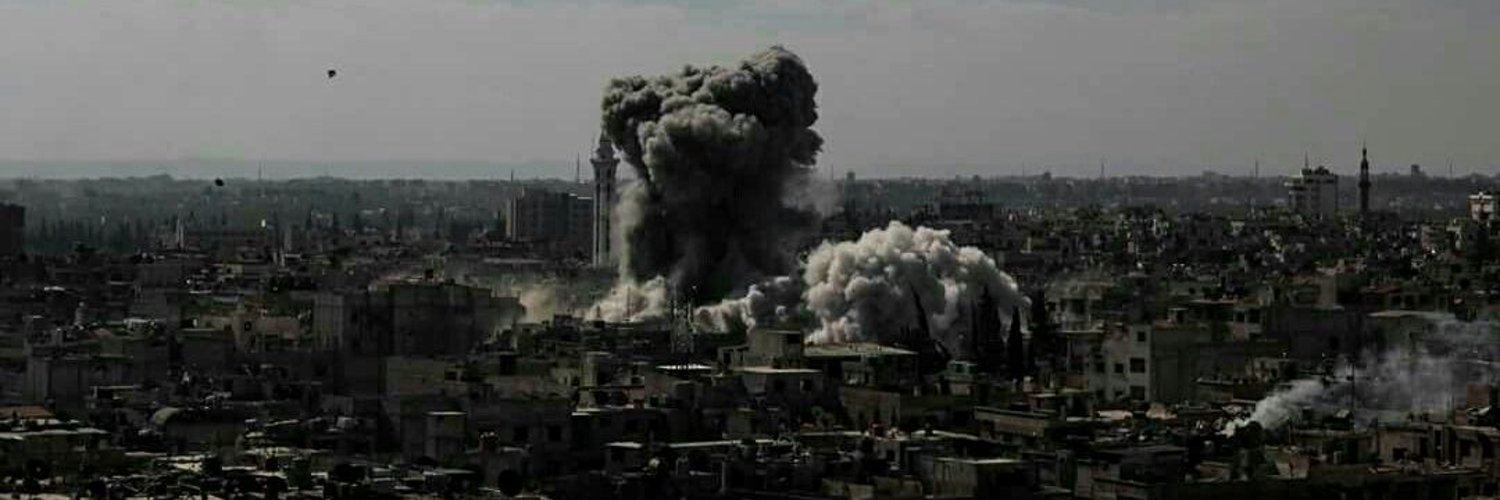

[airstrike, Eastern Ghouta]: image via Hamza Al-Ajweh @hamza_alajweh, 20 February 2018
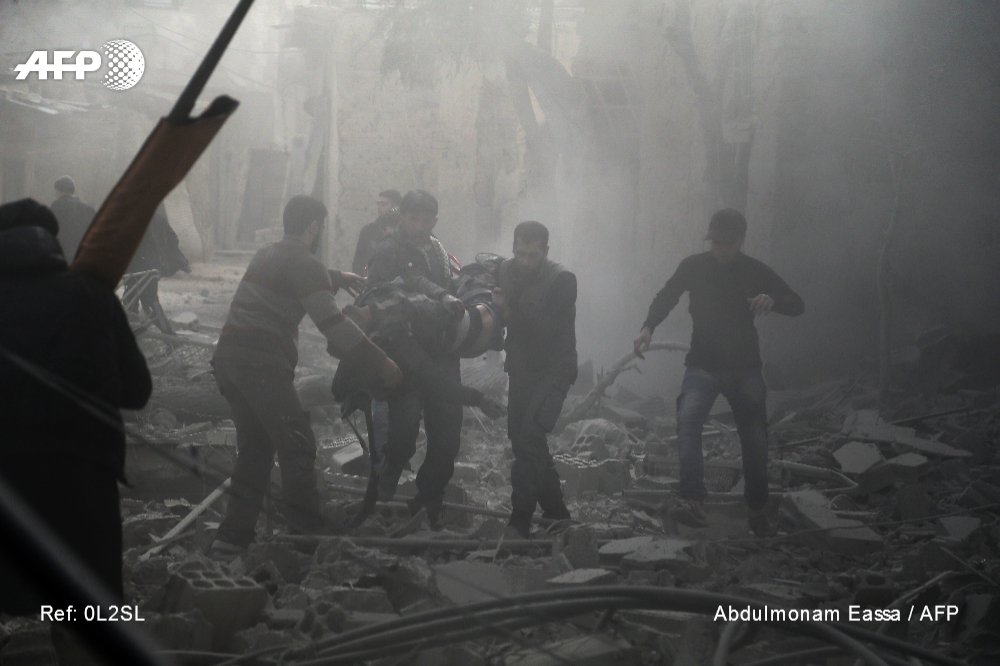
#Siria Más de 100 civiles murieron en Guta Oriental por segundo día consecutivo (OSDH) #AFP: image via Agence France-Presse @AFPespanol, 20 February 2018

#Syria Al menos 250 civiles mueren en Siria en bombardeos del régimen #AFP por @abddfree2: image via Agence France-Presse @AFPespanol, 20 February 2018
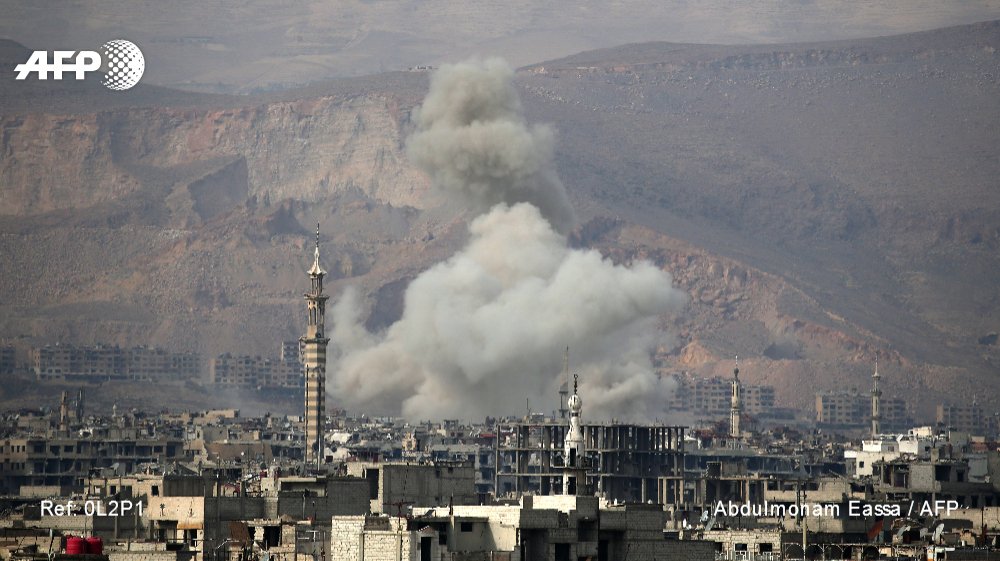
#Syria Al menos 250 civiles mueren en Siria en bombardeos del régimen #AFP por @abddfree2: image via Agence France-Presse @AFPespanol, 20 February 2018


#Al-Ghouta: image via Dr. Zaineddin @DrZaineddin, 18 February 2018

[airstrike, Eastern Ghouta]: image via Hamza Al-Ajweh @hamza_alajweh, 20 February 2018

[airstrike, Eastern Ghouta]: image via Hamza Al-Ajweh @hamza_alajweh, 20 February 2018

#Siria Más de 100 civiles murieron en Guta Oriental por segundo día consecutivo (OSDH) #AFP: image via Agence France-Presse @AFPespanol, 20 February 2018

#Syria Al menos 250 civiles mueren en Siria en bombardeos del régimen #AFP por @abddfree2: image via Agence France-Presse @AFPespanol, 20 February 2018

#Syria Al menos 250 civiles mueren en Siria en bombardeos del régimen #AFP por @abddfree2: image via Agence France-Presse @AFPespanol, 20 February 2018

100 civilians dead in Syria bombardment of rebel enclave @AFP Smoke rises from buildings following bombardment on the village of Mesraba #Ghouta Photo Hamza Al-Ajweh: image via AFP Photo @AFPphoto, 20 February 2018
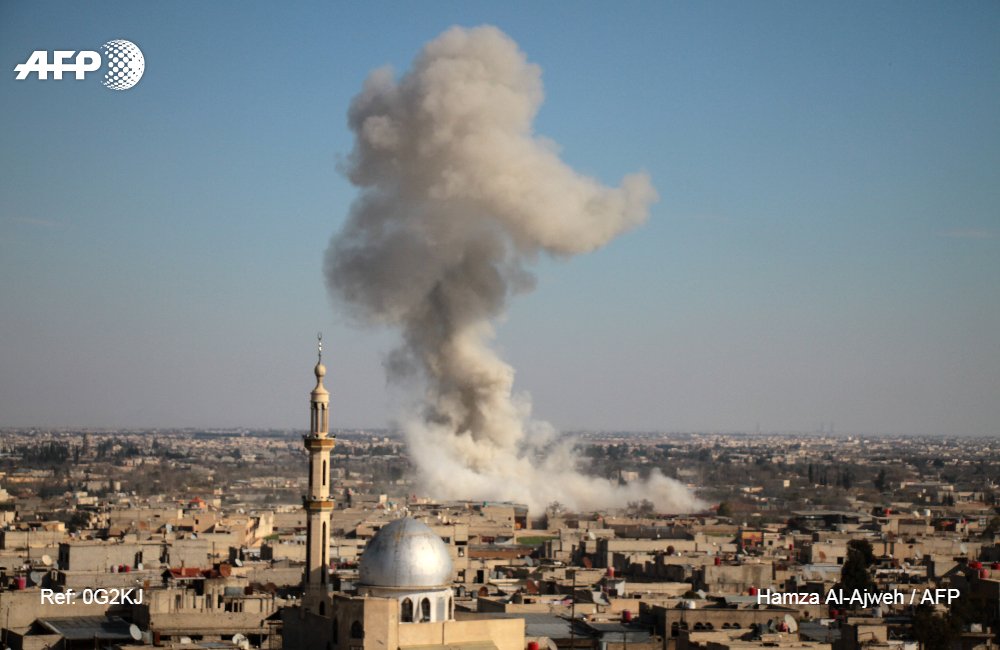
#UPDATE A barrage of air strikes, rocket fire and artillery slammed into several towns across Eastern Ghouta, killing at least 77: image via AFP news agency @AFP, 19 February 2018
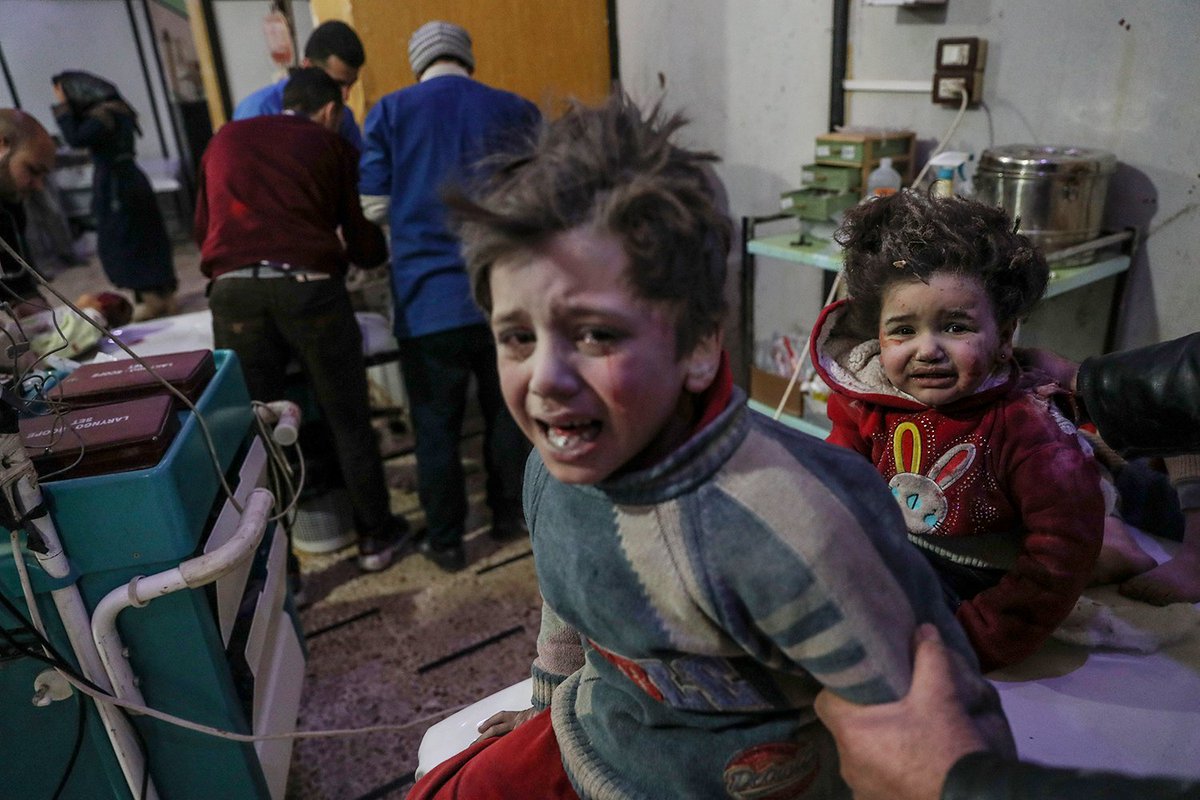
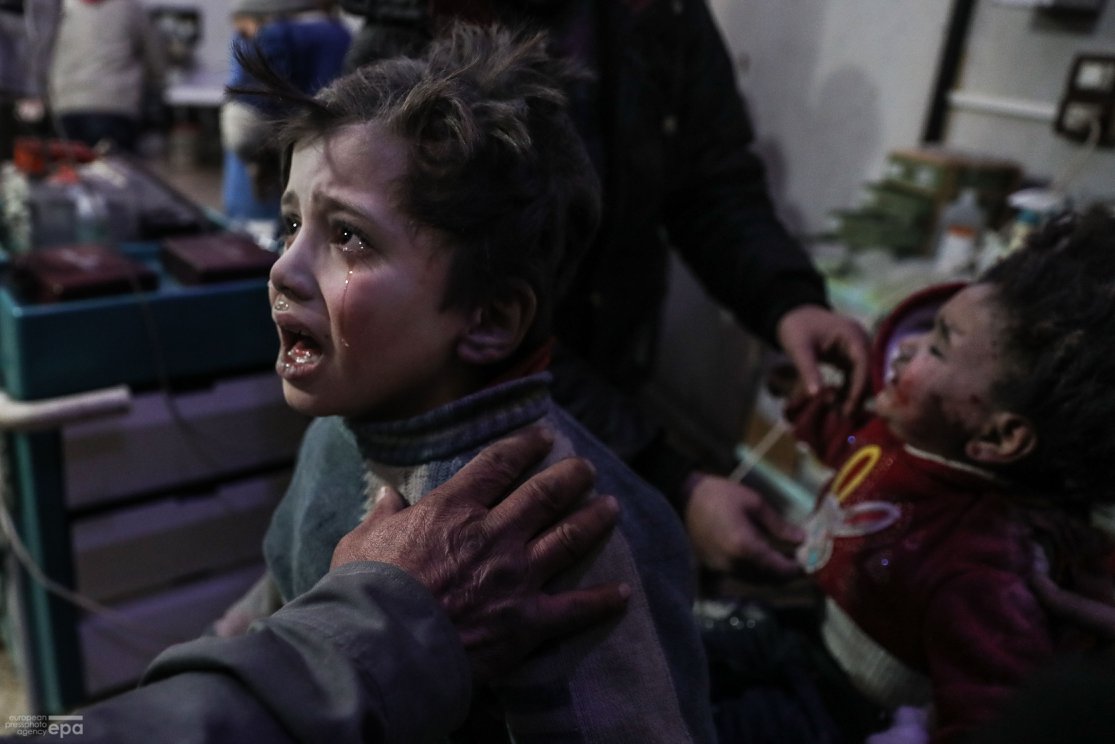
Aftermath of Assad regime airstrikes on Douma, eastern Ghouta. 103 people were killed in this besieged enclave today. Photos taken today, Feb 19 by @badramamet / EPA: image via ElizabethTsurkov @Elizrael, 19 February 2018
Heba Amouri, 20y, places her finger in her hungry two-months-old baby girl’s mouth, to calm her down, because she can’t feed her.
Heba lost two children by regime bombing.
photo was taken by @BassamKhabieh at a medical center in #Douma, #EasternGhouta, 08/01/18 #BreakGhoutaSiege: image via Siege Updates @SiegeUpdates, 13 January 2018
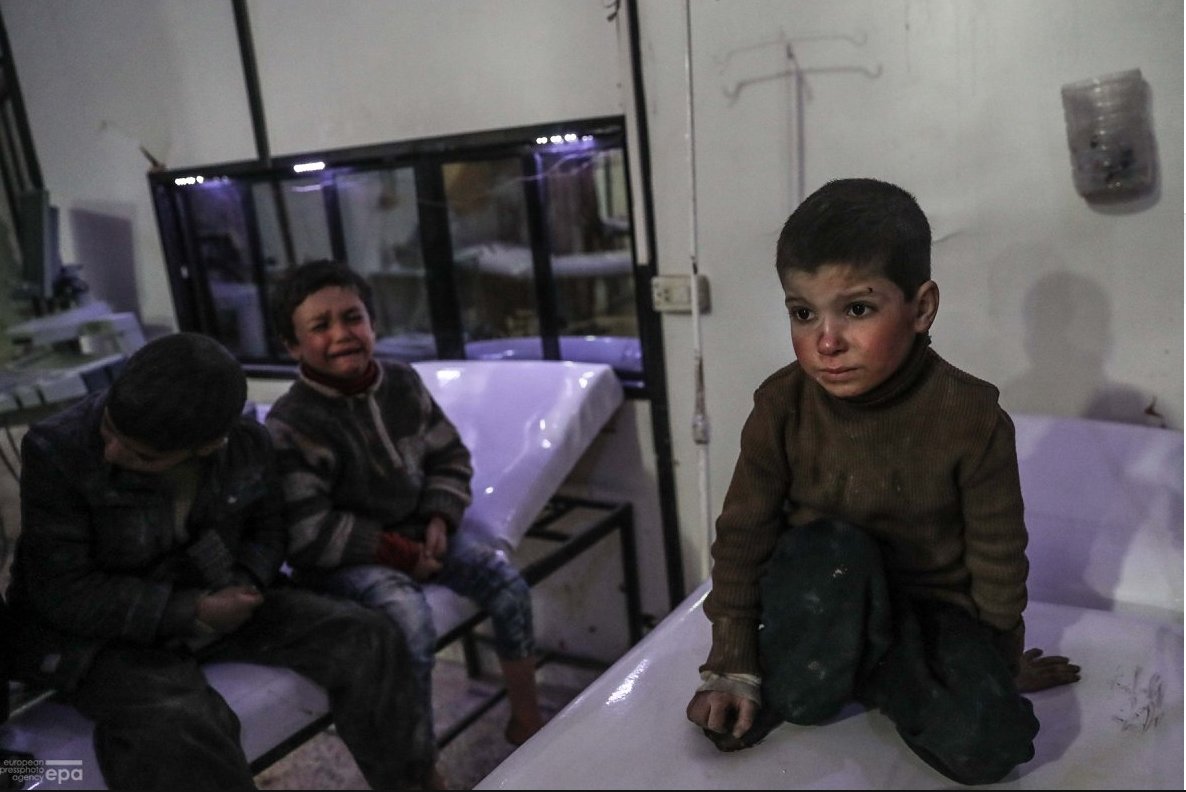
Horrific photos taken yest. in #Ghouta by the brave @badramamet We reported for months like this on Aleppo. During that time hundreds of civilians were killed. How completely agonising and heartbreaking the same is unfolding in Ghouta #wecantsaywedidntknow: image via Sophie McNeill @sophiemcneill, 29 February 2018
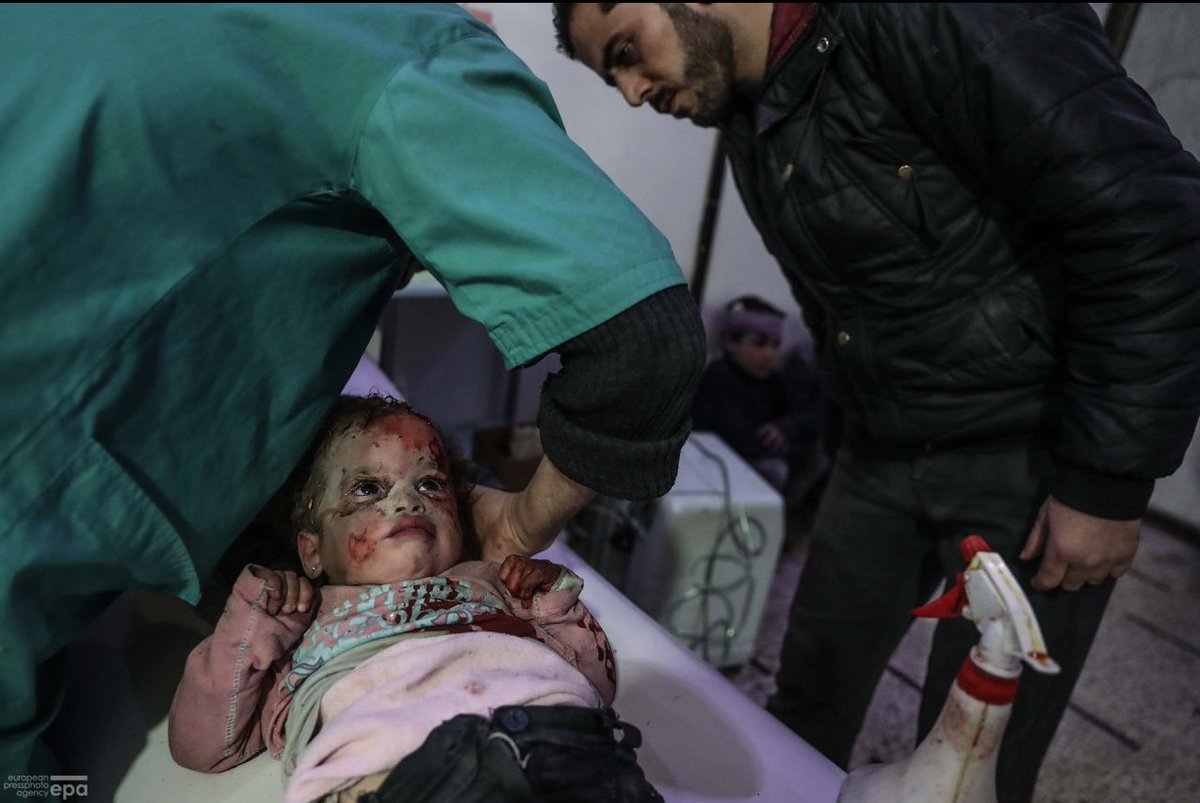
Horrific photos taken yest. in #Ghouta by the brave @badramamet We reported for months like this on Aleppo. During that time hundreds of civilians were killed. How completely agonising and heartbreaking the same is unfolding in Ghouta #wecantsaywedidntknow: image via Sophie McNeill @sophiemcneill, 29 February 2018
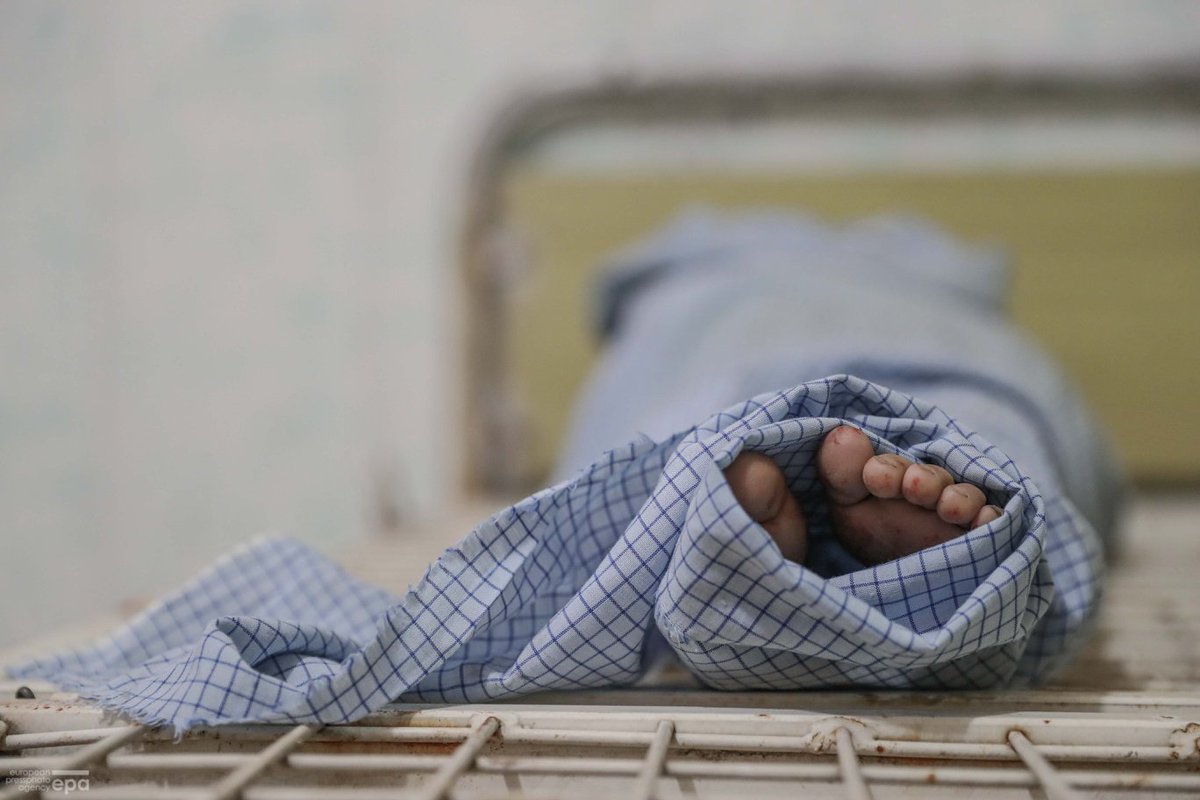
Aftermath of Assad regime airstrikes on Douma, eastern Ghouta. 103 people were killed in this besieged enclave today. Photos taken today, Feb 19 by @badramamet / EPA: image via ElizabethTsurkov @Elizrael, 19 February 2018
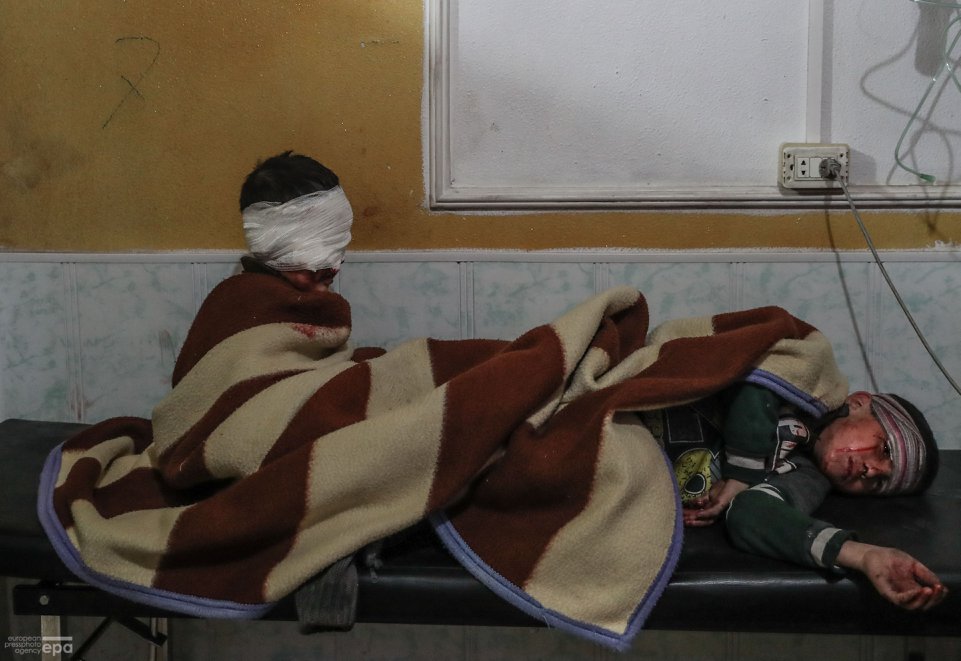
Aftermath of Assad regime airstrikes on Douma, eastern Ghouta. 103 people were killed in this besieged enclave today. Photos taken today, Feb 19 by @badramamet / EPA: image via ElizabethTsurkov @Elizrael, 19 February 2018

Horrific photos taken yest. in #Ghouta by the brave @badramamet We reported for months like this on Aleppo. During that time hundreds of civilians were killed. How completely agonising and heartbreaking the same is unfolding in Ghouta #wecantsaywedidntknow: image via Sophie McNeill @sophiemcneill, 29 February 2018

Horrific photos taken yest. in #Ghouta by the brave @badramamet We reported for months like this on Aleppo. During that time hundreds of civilians were killed. How completely agonising and heartbreaking the same is unfolding in Ghouta #wecantsaywedidntknow: image via Sophie McNeill @sophiemcneill, 29 February 2018

Aftermath of Assad regime airstrikes on Douma, eastern Ghouta. 103 people were killed in this besieged enclave today. Photos taken today, Feb 19 by @badramamet / EPA: image via ElizabethTsurkov @Elizrael, 19 February 2018

Aftermath of Assad regime airstrikes on Douma, eastern Ghouta. 103 people were killed in this besieged enclave today. Photos taken today, Feb 19 by @badramamet / EPA: image via ElizabethTsurkov @Elizrael, 19 February 2018
A person inspects a damaged building in Douma, Syria, as pro-government forces pounded the rebel-held district in a surge of air strikes, rocket fire and shelling Photo @BassamKhabieh: image via Reuters Pictures @reuterspictures, 20 February 2018

#Al-Ghouta: image via Dr. Zaimeddin @DrZaineddin, 18 February 2018
Do you imagine the horror that people are subjected to because of the air
raids and the sounds of warplanes that do not leave our skies
#GhoutaHolocaust Besieged #EasternGhouta - #Syria: tweet via Amer
almohibany @amer_almohibany, 20 February 2018

Air strike in Eastern Ghouta, February 8, 2018.: photo by Abdulmonam Eassa/AFP, 8 February 2018

A member of the Syrian civil defence carries a wounded child from the rubble after a reported regime air strike in the rebel-held town of Jisreen, in the besieged Eastern Ghouta region on the outskirts of the capital Damascus, on February 8, 2018.: photo by Abdulmonam Eassa/AFP, 8 February 2018

After the air strike, Eastern Ghouta, February 8, 2018.: photo by Abdulmonam Eassa/AFP, 8 February 2018

A member of the Syrian civil defence carries the body of a child out of the rubble of a house that was hit by a reported regime air strike in the rebel-held town of Jisreen, in the besieged Eastern Ghouta region on the outskirts of the capital Damascus on February 8, 2018.: photo by Abdulmonam Eassa/AFP, 8 February 2018
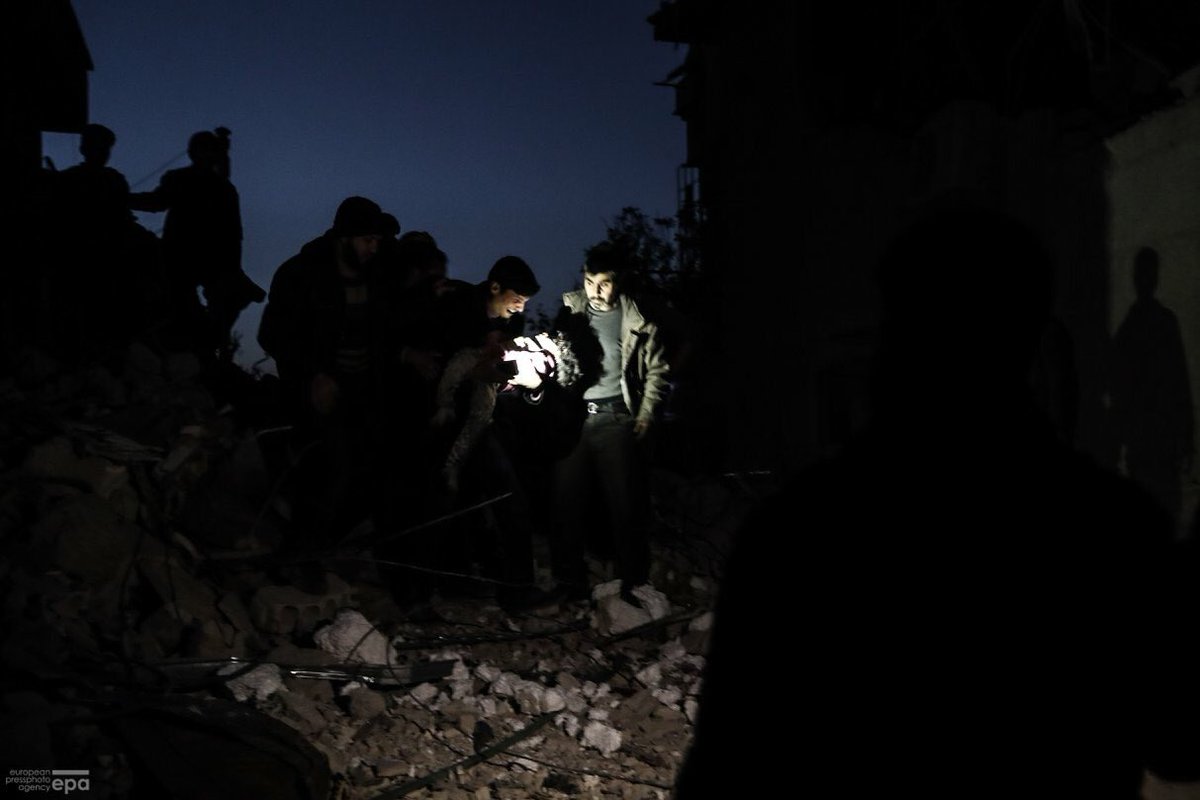

Bodies of children killed in a reported regime air strike in the rebel-held town of Hamouria, in the besieged Eastern Ghouta region on the outskirts of the capital Damascus on February 7, 2018.: photo by Abdulmonam Eassa/AFP, 7 February 2018
Dans l'enfer de la Ghouta, près de Damas, @abdfree2 photographe pour l'AFP suit les vivants sous les bombardements #AFP: image via Agence France-Presse @afpfr, 17 February 2018

Air strike in Eastern Ghouta, February 8, 2018.: photo by Abdulmonam Eassa/AFP, 8 February 2018
Life so full of blood: Abdulmonam Eassa, AFP, 15 February 2018
Eastern Ghouta, Syria -- Life has become so scary and so full of blood. Before, the shelling was concentrated in the areas where rebels and the government troops were clashing. But now, any place can be a target, day or night.
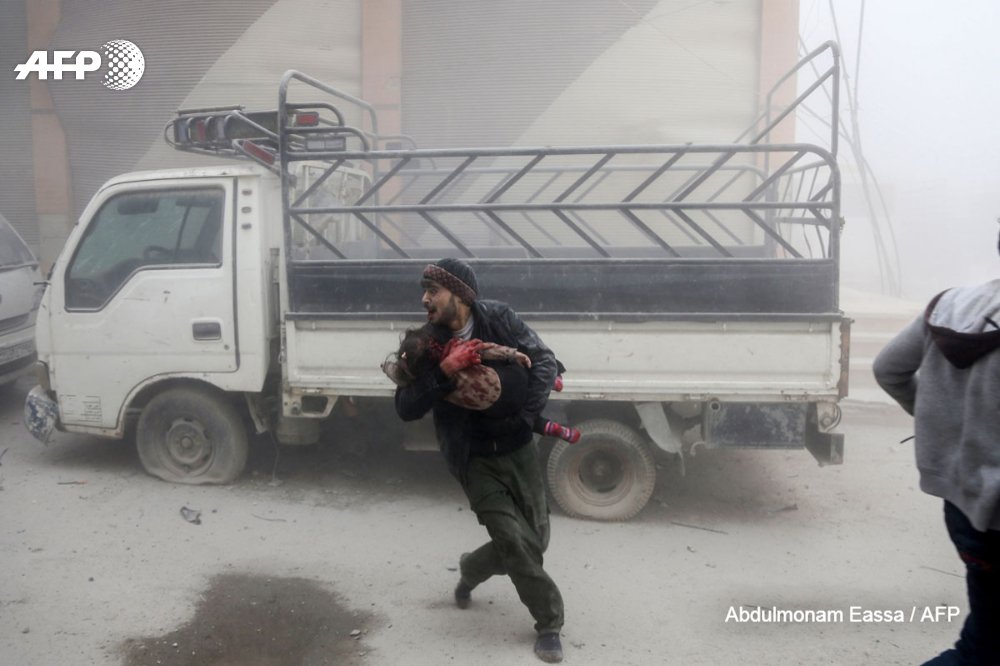
Air strike in Eastern Ghouta, February 8, 2018.: photo by Abdulmonam Eassa/AFP, 8 February 2018Eastern Ghouta, Syria -- Life has become so scary and so full of blood. Before, the shelling was concentrated in the areas where rebels and the government troops were clashing. But now, any place can be a target, day or night.

"La vie est devenue si effrayante, si pleine de sang. J’ai vu tant de choses affreuses, photographié des proches et des amis blessés. Nous avons tous peur que la situation ne se termine comme dans le siège d’Alep.": image via Agence France-Presse @afpfr, 17 February 2017
Eastern Ghouta, where I live, is the
last area held by rebels on the doorstep of the Syrian capital
Damascus. It’s a collection of towns home to around 400,000 people. But
last week you would have never suspected as much -- the streets were
deserted. Last week Syrian government forces unleashed an intense
five-day campaign of air strike and artillery fire that killed some 250
civilians. Three times that were wounded.

A member of the Syrian civil defence carries a wounded child from the rubble after a reported regime air strike in the rebel-held town of Jisreen, in the besieged Eastern Ghouta region on the outskirts of the capital Damascus, on February 8, 2018.: photo by Abdulmonam Eassa/AFP, 8 February 2018
The roads completely emptied of women and
children; there were just men in the streets. People resorted to sitting
in the ground floors or basements of their buildings and schools. But
the bombardments were so strong that sometimes even people cowering in
cellars were killed or wounded.

After the air strike, Eastern Ghouta, February 8, 2018.: photo by Abdulmonam Eassa/AFP, 8 February 2018
During the day, you could see some men in
the streets, usually keeping close to the entrance of their houses. When
the sound of an airplane pierced the air, everyone ran for shelter. But
no place was truly safe -- the shelling targeted mosques, houses,
schools, markets, main roads, even basements.

A member of the Syrian civil defence carries the body of a child out of the rubble of a house that was hit by a reported regime air strike in the rebel-held town of Jisreen, in the besieged Eastern Ghouta region on the outskirts of the capital Damascus on February 8, 2018.: photo by Abdulmonam Eassa/AFP, 8 February 2018
How do you live in a situation like that?
You adapt. Although markets emptied and most stores were shuttered, some
remained open all day. Some people just got used to the shelling, it’s
as if they were waiting for death in the streets.
The shelling was so omnipresent
that people buried their dead as quickly as possible -- for fear that
the cemetery would be targeted while they were there. Sometimes the dead
would be buried at night.

More than 235 martyrs have been killed since the beginning of this month in #Douma, #EasternGhouta #SyriaCivilDef @ActForGhouta @epaphotos: image via Mohammed Badra @badramamet, 11 February 2018
Fear grips you often when you live through
something like this, but you learn to deal with it. One day I was with
some paramedics and rescuers, taking pictures, when an aircraft returned
to target the same place with a missile. We were about 100 meters away.
After the strike, we went into an old house, to take out two children
and a woman from under the rubble. Just then, an artillery bombardment
struck the area, sending everyone fleeing except for the rescuers and
me. I could feel the fear creeping over me, but I realized that it won’t
change anything to be scared. So I took my pictures and left as quickly
as I could.


From besieged #EasternGhouta:
The siege comes back to the forefront after the escalation of air and artillery bombardment and prices are rising in a crazy way
The @UN and the world stand helpless against the tragedy of 400,000 people @NRC_Egelund Photo @amer_almohibany: image via Amer almohibany @amer_almohibany, 15 February 2018
Goods have become scarce and prices for
them have skyrocketed. Main meals consist of mostly rice or bulgur;
breakfast is some olives and yogurt. Electricity is available for only
about five hours per day and is very expensive. I need electricity for
my work, so I have no choice but to use it. I pay about 100 US dollars
per month -- that buys me just enough to send my pictures and charge the
batteries for my cameras.
One day, I went out of the house without
eating, as often the case. Three times I ended up photographing carnage
that day, the bloody aftermath of air strikes. When I returned to the
house, I couldn’t eat anything. I was too tired and too shaken by what I
had seen. Tears were streaming down my face. I sent my pictures and
went straight to bed. The next morning I woke to the sound of airplanes.

Bodies of children killed in a reported regime air strike in the rebel-held town of Hamouria, in the besieged Eastern Ghouta region on the outskirts of the capital Damascus on February 7, 2018.: photo by Abdulmonam Eassa/AFP, 7 February 2018
As a photographer, you see more than most
people, because you seek out the places of death. But everyone here has
been touched by it. The people of Ghouta have been forgotten and I just
hope that my images will serve as a reminder of the bloodshed that is
happening here.
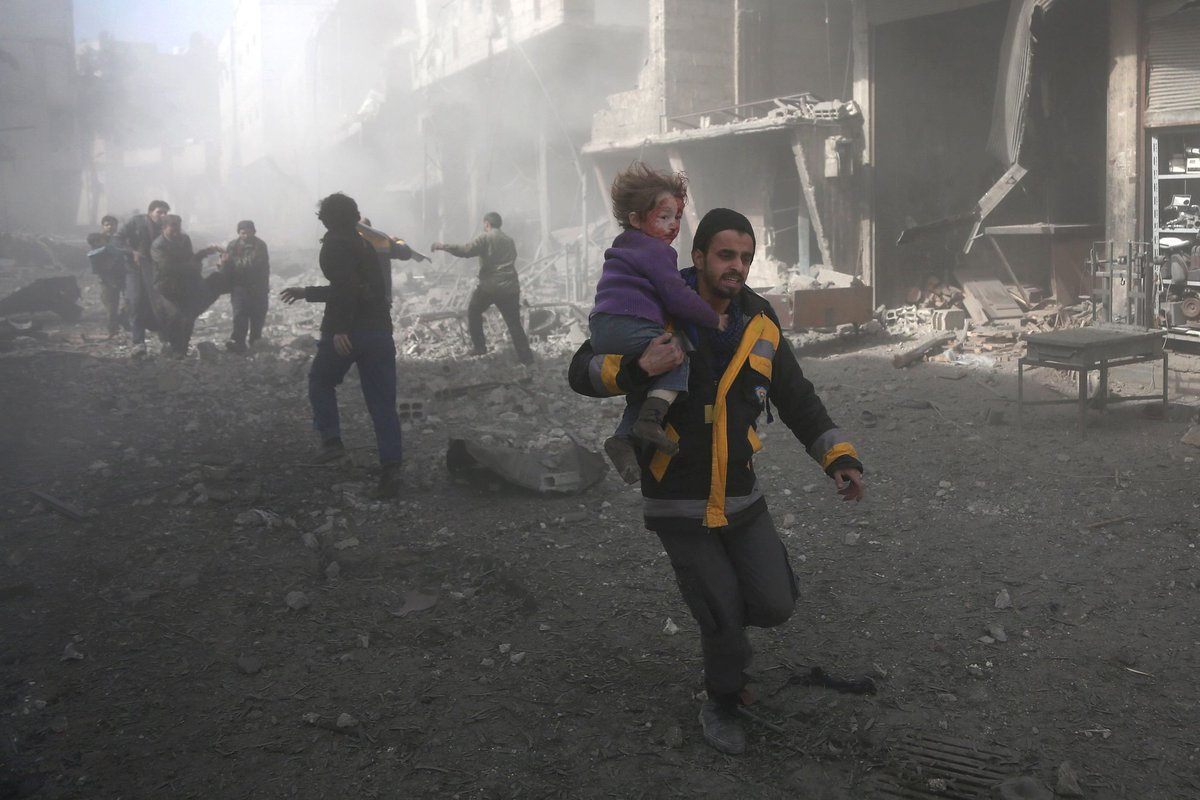

#Hamouria 19 Feb 2018.: photo by Abdulmonam Eassa @abdfree2, 19 February 2018

Kaitlyn Weaver of Canada performs in the figure skating free dance at #PyeongChang2018 Photo Lucy Nicholson: image via Reuters Pictures @reuterspictures, 20 February 2018
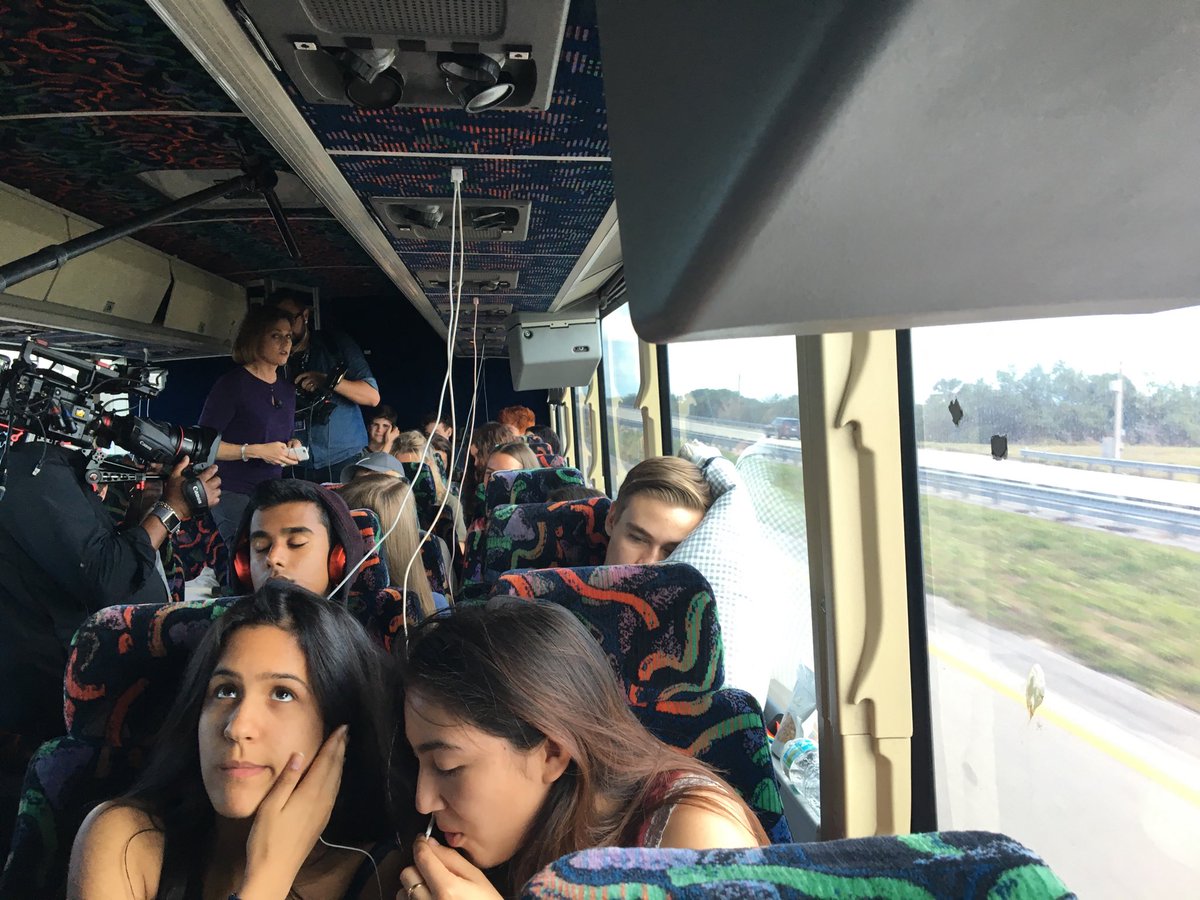
Amanda De La Cruz, left, is riding to Tallahassee to honor her friend Helena, a kid with "a galaxy of freckles." Helena died in the Feb. 14 shooting.: image via julieturkewitz @julieturkewitz, 20 February 2018

Untitled: image via Diário de torcedor @tweettorcidaas, 20 February 2018

Untitled: image via Diário de torcedor @tweettorcidaas, 20 February 2018

Untitled: image via Diário de torcedor @tweettorcidaas, 20 February 2018


I saw the old god of war stand in a bog between chasm and rockface.
He smelled of free beer and carbolic and showed his testicles to adolescents, for he had been rejuvenated by several professors. In a hoarse wolfish voice he declared his love for everything young. Nearby stood a pregnant woman, trembling.
And without shame he talked on and presented himself as a great one for order. And he described how everywhere he put barns in order, by emptying them.
And as one throws crumbs to sparrows, he fed poor people with crusts of bread which he had taken away from poor people.
His voice was now loud, now soft, but always hoarse.
In a loud voice he spoke of great times to come, and in a soft voice he taught women how to cook crows and seagulls. Meanwhile his back was unquiet, and he kept looking round, as though afraid of being stabbed.
And every five minutes he assured his public that he would take up very little of their time.
Bertolt Brecht (1898-1956): The God of War (Der Kriegsgott), 1938, English version by Michael Hamburger, in Bertolt Brecht: Poems 1913-1956 (1976)

Casualties of a mass panic; during Japanese air raid, 4,000 people were trampled or suffocated to death trying to return to shelters. Chungking, China, 5 June 1941: photo by Carl Mydans (National Archives and Records Administration)
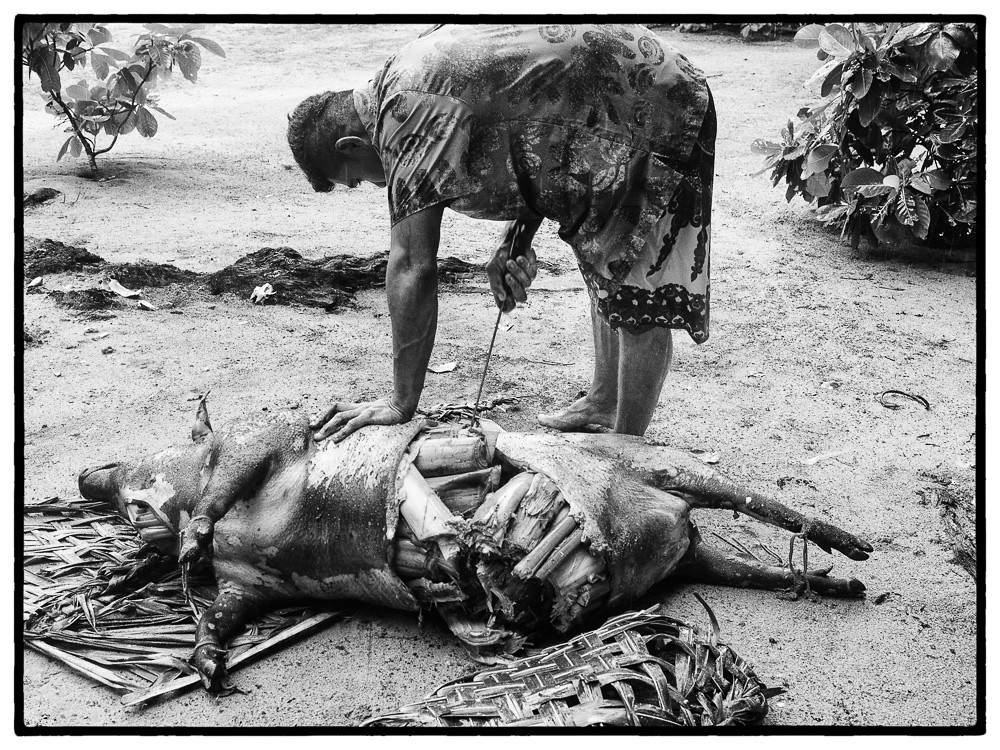
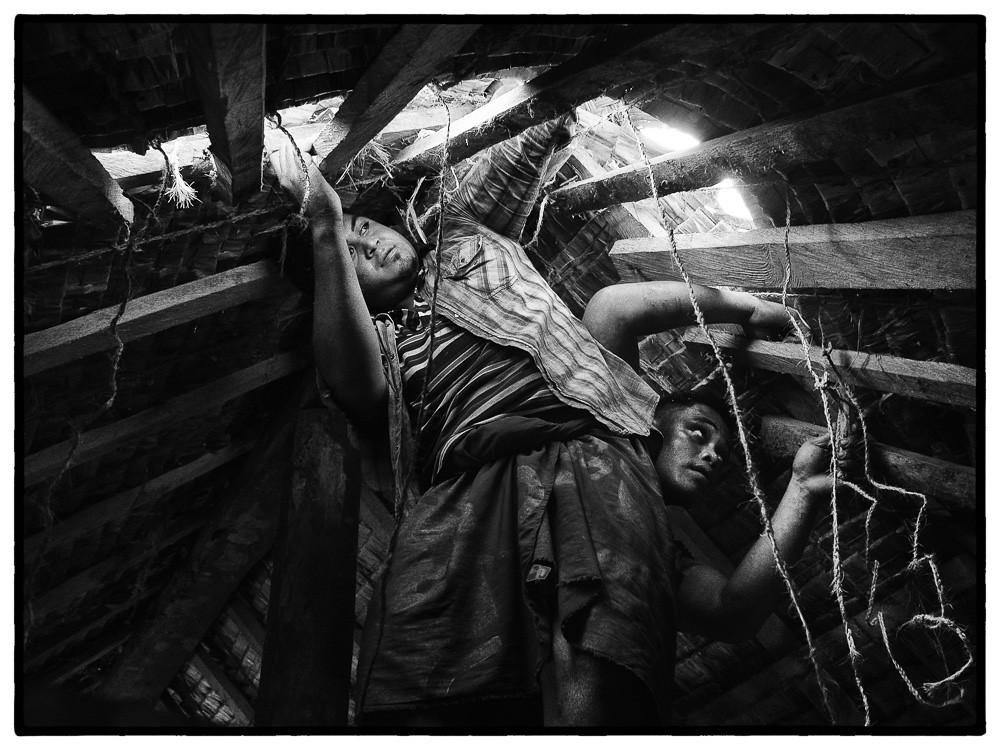
Vaisei, Futuna, 2017 | Réfection collective de la couverture d'un toit de fale en feuilles de pandanus. [Mata Utu, Hahake District, Wallis and Futuna]: photo by Christian Neumüller, 30 June 2017
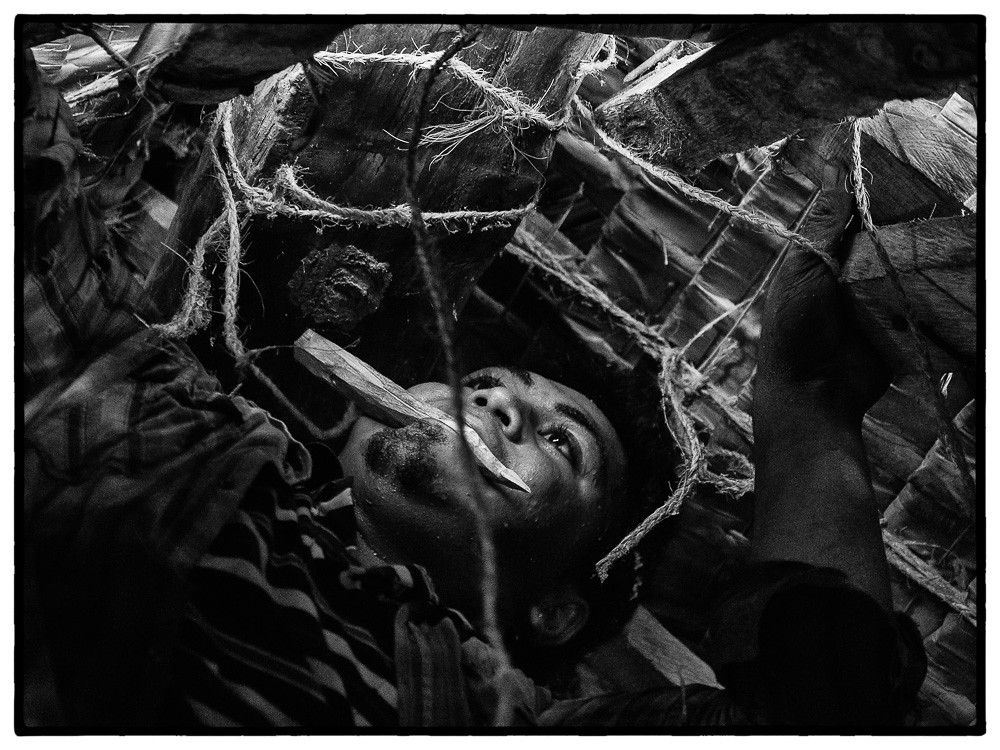
Vaisei, Futuna, 2017 | Réfection collective de la couverture d'un toit de fale en feuilles de pandanus. [Mata Utu, Hahake District, Wallis and Futuna]: photo by Christian Neumüller, 30 June 2017
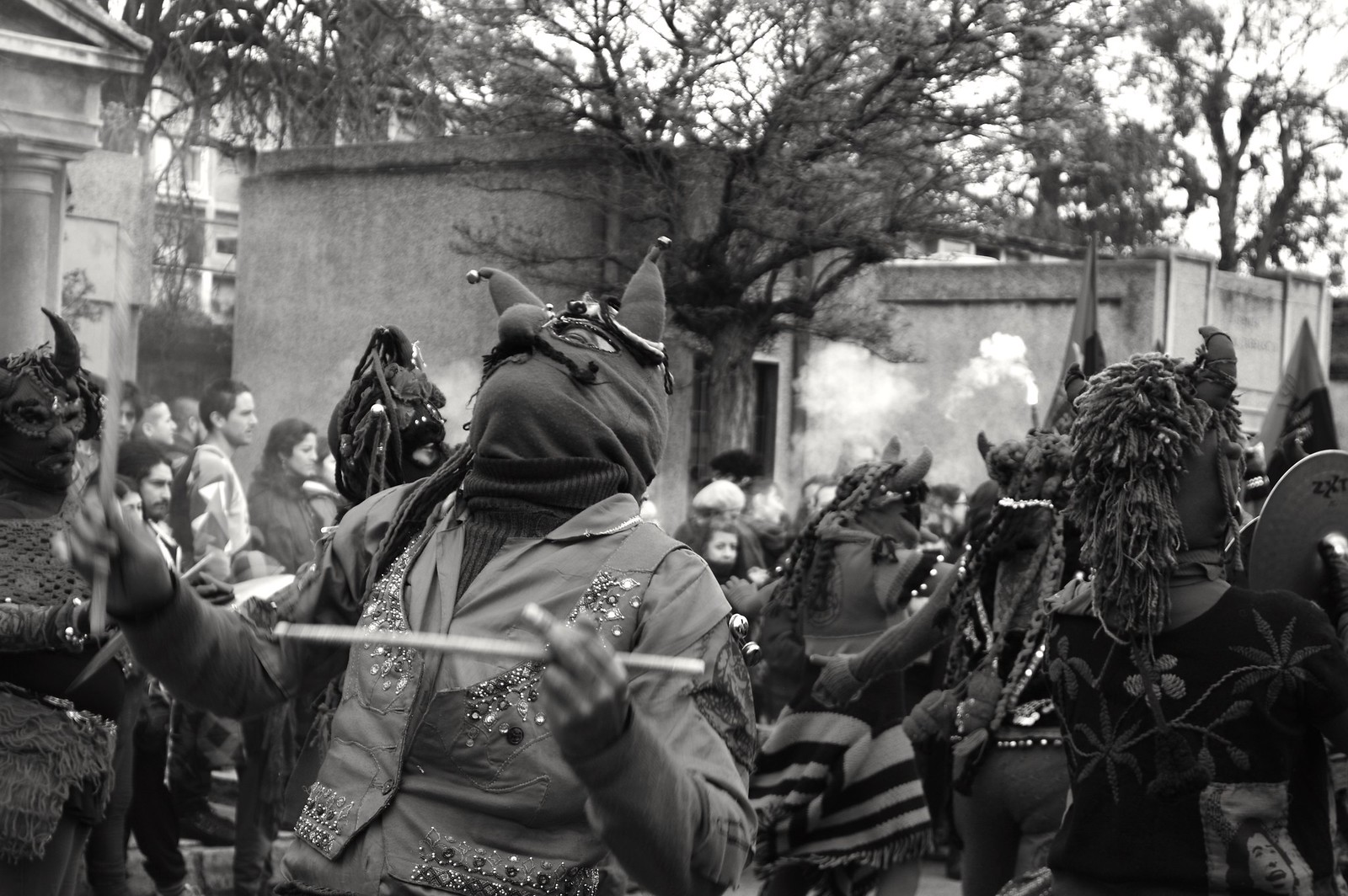
Marcha por el 11 de septiembre | Diablos rojos [santiago de chile]: photo by alicia alondra, 10 September 2017

Marcha por el 11 de septiembre | Diablos rojos [santiago de chile]: photo by alicia alondra, 10 September 2017

Marcha por el 11 de septiembre | Diablos rojos [santiago de chile]: photo by alicia alondra, 10 September 2017
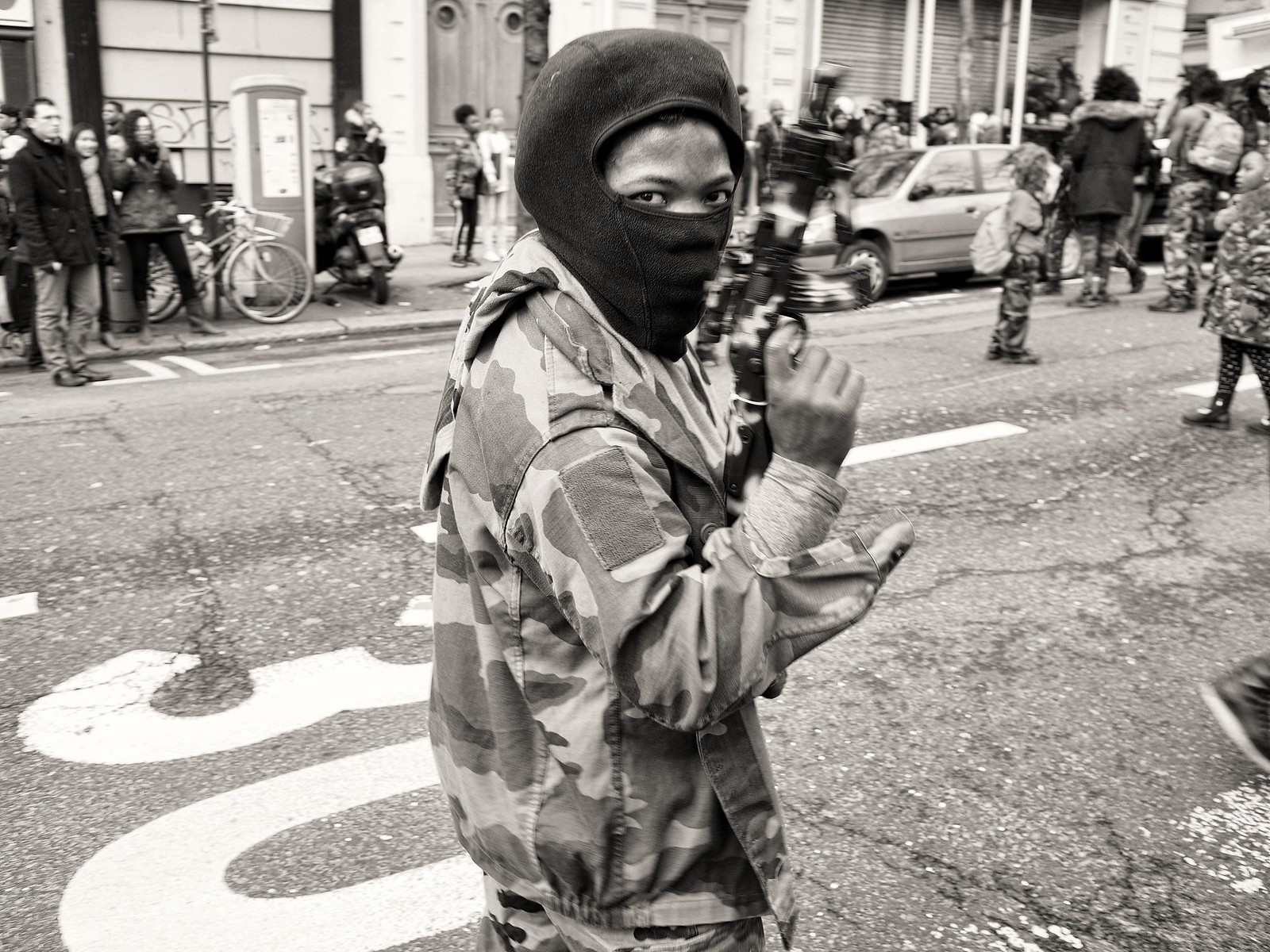
Carnaval Spotted |Paris: photo by Taieb M, 11 February 2018

Carnaval Spotted |Paris: photo by Taieb M, 11 February 2018

Carnaval Spotted |Paris: photo by Taieb M, 11 February 2018
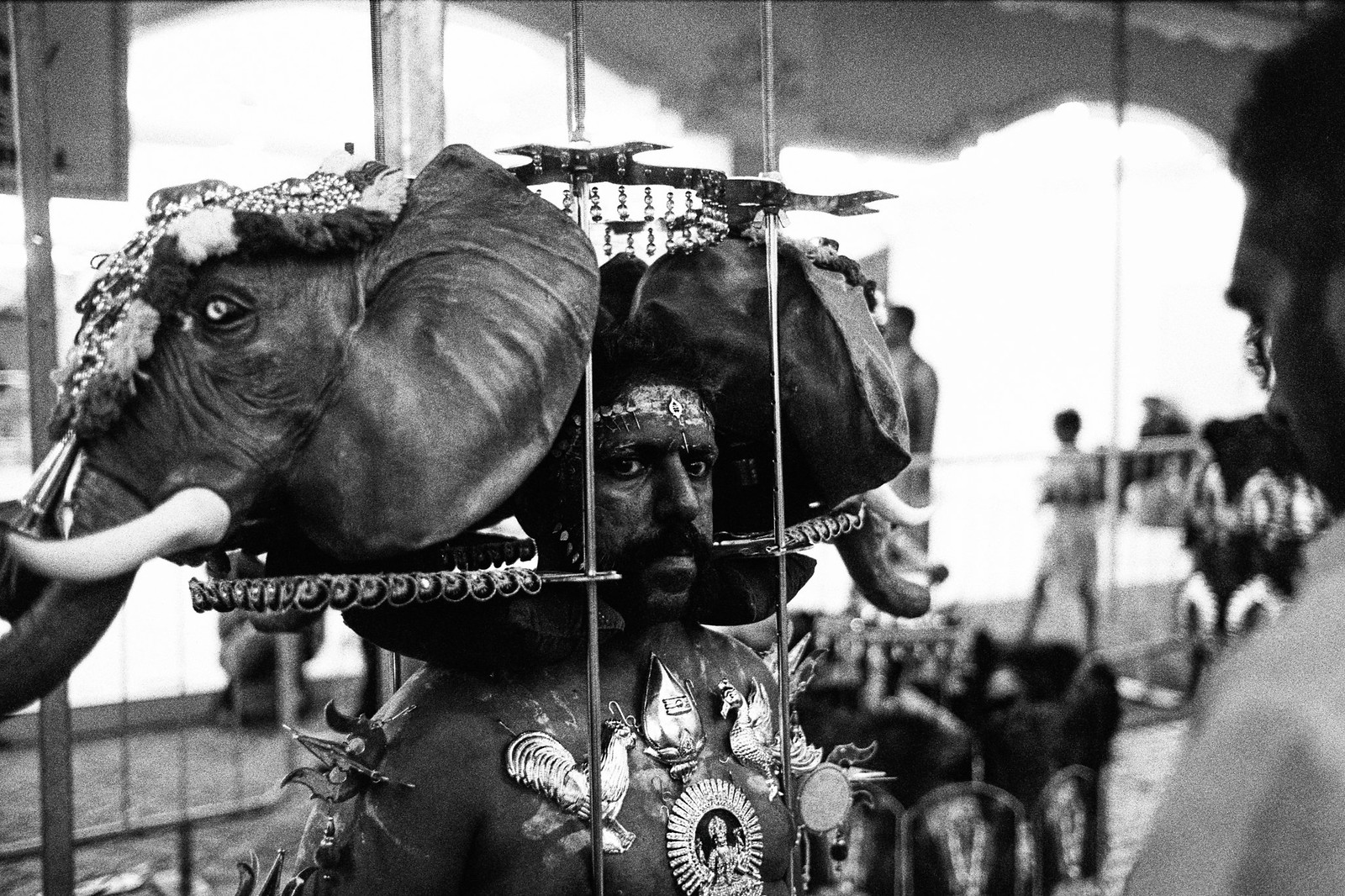
Elephant Man | Thaipusam Festival, Little India, Singapore: photo by Jetlag and A Camera Bag, 20 February 2018

Elephant Man | Thaipusam Festival, Little India, Singapore: photo by Jetlag and A Camera Bag, 20 February 2018

Elephant Man | Thaipusam Festival, Little India, Singapore: photo by Jetlag and A Camera Bag, 20 February 2018
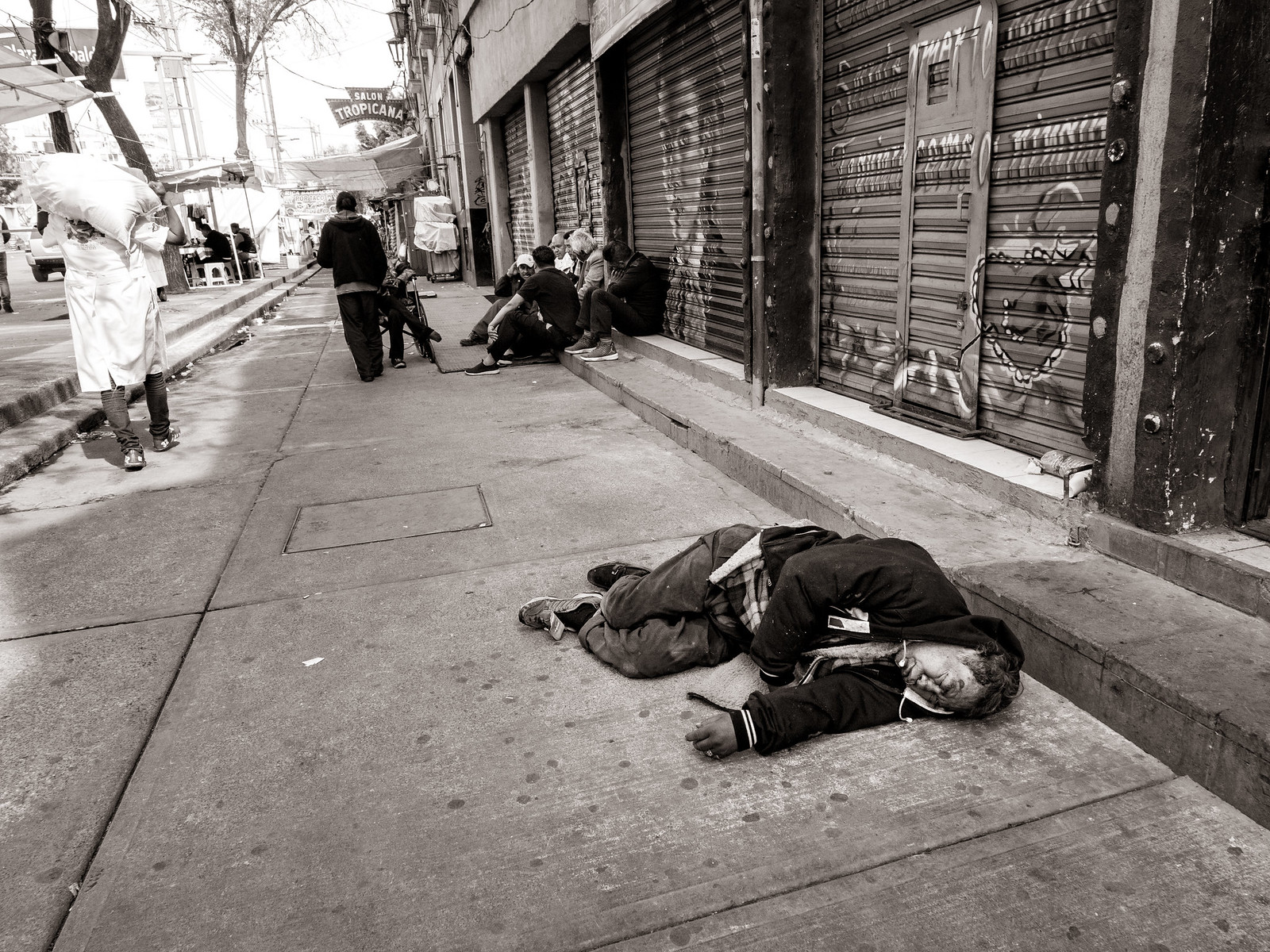
Hard Life in Mexico City | A man sleeps in the street at lunch time: photo by Eric Demers, 17 December 2017

Hard Life in Mexico City | A man sleeps in the street at lunch time: photo by Eric Demers, 17 December 2017

Hard Life in Mexico City | A man sleeps in the street at lunch time: photo by Eric Demers, 17 December 2017

Amanda De La Cruz, left, is riding to Tallahassee to honor her friend Helena, a kid with "a galaxy of freckles." Helena died in the Feb. 14 shooting.: image via julieturkewitz @julieturkewitz, 20 February 2018

Untitled: image via Diário de torcedor @tweettorcidaas, 20 February 2018

Untitled: image via Diário de torcedor @tweettorcidaas, 20 February 2018

Untitled: image via Diário de torcedor @tweettorcidaas, 20 February 2018
Bertolt Brecht: The God of War (Der Kriegsgott)

The USS Arizona (BB-39) burning after the Japanese attack on Pearl Harbor, 7 December 1941. USS Arizona sunk at Pearl Harbor. The ship is resting on the harbor bottom. The supporting structure of the forward tripod mast has collapsed after the forward magazine exploded.: photographer unknown; image by Cobatfor, 2 September 2011 (Franklin D. Roosevelt Presidential Library and Museum / National Archives and Records Administration)
Der Kriegsgott
Ich sah den alten Kriegsgott stehen auf einem Sumpf zwischen Abgrund und Felswand.
Er roch nach Freibier und Karbol und zeigte Halbwüchsigen seine Hoden, denn er war von einigen Professoren verjüngt worden.
Er beteuerte mit heiserer Wolfsstimme seine Liebe zu allem Jungen. Dabei stand eine schwangere Frau und zitterte.
Und ohne Scham redete er weiter und stellte sich vor als großer
Ordnungsmann. Und er schilderte, wie er die Scheunen überall ordnete,
indem er sie leerte.
Und wie man Spatzen Brocken hinwirft, so fütterte er arme Leute mit Brotkrusten, die er armen Leuten weggenommen hatte.
Seine Stimme war bald laut und bald leise, aber immer heiser.
Mit lauter Stimme sprach er von kommenden großen Zeiten, und mit leiser
Stimme lehrte er die Weiber, wie man Krähen und Möwen kocht.
Dabei hatte er einen unruhigen Rücken und sah sich immerfort um, als fürchtete er einen Dolchstoß.
Und alle fünf Minuten versicherte er dem Publikum, daß er nur ganz kurz aufzutreten gedenke.

Aftermath of an air strike, Eastern Ghouta, February 8, 2018.: photo by Abdulmonam Eassa/AFP, 8 February 2018
The God of War
I saw the old god of war stand in a bog between chasm and rockface.
He smelled of free beer and carbolic and showed his testicles to adolescents, for he had been rejuvenated by several professors. In a hoarse wolfish voice he declared his love for everything young. Nearby stood a pregnant woman, trembling.
And without shame he talked on and presented himself as a great one for order. And he described how everywhere he put barns in order, by emptying them.
And as one throws crumbs to sparrows, he fed poor people with crusts of bread which he had taken away from poor people.
His voice was now loud, now soft, but always hoarse.
In a loud voice he spoke of great times to come, and in a soft voice he taught women how to cook crows and seagulls. Meanwhile his back was unquiet, and he kept looking round, as though afraid of being stabbed.
And every five minutes he assured his public that he would take up very little of their time.
Bertolt Brecht (1898-1956): The God of War (Der Kriegsgott), 1938, English version by Michael Hamburger, in Bertolt Brecht: Poems 1913-1956 (1976)

Casualties of a mass panic; during Japanese air raid, 4,000 people were trampled or suffocated to death trying to return to shelters. Chungking, China, 5 June 1941: photo by Carl Mydans (National Archives and Records Administration)

Alofi, Futuna, 2017 [Mata Utu, Hahake District, Wallis and Futuna]: photo by Christian Neumüller, 20 July 2017

Vaisei, Futuna, 2017 | Réfection collective de la couverture d'un toit de fale en feuilles de pandanus. [Mata Utu, Hahake District, Wallis and Futuna]: photo by Christian Neumüller, 30 June 2017

Vaisei, Futuna, 2017 | Réfection collective de la couverture d'un toit de fale en feuilles de pandanus. [Mata Utu, Hahake District, Wallis and Futuna]: photo by Christian Neumüller, 30 June 2017

Marcha por el 11 de septiembre | Diablos rojos [santiago de chile]: photo by alicia alondra, 10 September 2017

Marcha por el 11 de septiembre | Diablos rojos [santiago de chile]: photo by alicia alondra, 10 September 2017

Marcha por el 11 de septiembre | Diablos rojos [santiago de chile]: photo by alicia alondra, 10 September 2017

Carnaval Spotted |Paris: photo by Taieb M, 11 February 2018

Carnaval Spotted |Paris: photo by Taieb M, 11 February 2018

Carnaval Spotted |Paris: photo by Taieb M, 11 February 2018

Elephant Man | Thaipusam Festival, Little India, Singapore: photo by Jetlag and A Camera Bag, 20 February 2018

Elephant Man | Thaipusam Festival, Little India, Singapore: photo by Jetlag and A Camera Bag, 20 February 2018

Elephant Man | Thaipusam Festival, Little India, Singapore: photo by Jetlag and A Camera Bag, 20 February 2018

Hard Life in Mexico City | A man sleeps in the street at lunch time: photo by Eric Demers, 17 December 2017

Hard Life in Mexico City | A man sleeps in the street at lunch time: photo by Eric Demers, 17 December 2017

Hard Life in Mexico City | A man sleeps in the street at lunch time: photo by Eric Demers, 17 December 2017







No comments:
Post a Comment